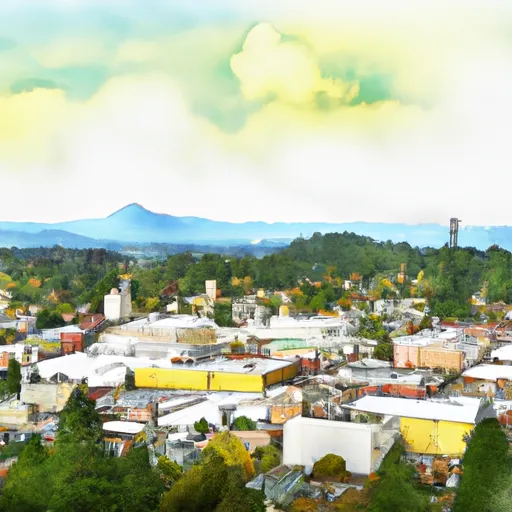°F
°F
mph
Windspeed
%
Humidity











Westfir is a small town located in Lane County, Oregon. Situated in the western part of the state, Westfir experiences a temperate climate characterized by mild, wet winters and warm, dry summers. The average annual rainfall is around 55 inches, with precipitation occurring throughout the year. The surrounding landscape is dominated by lush forests, with Douglas fir and western hemlock being the primary tree species.
One of the main attractions in Westfir is the nearby North Fork Middle Fork Willamette River. The hydrology of this area is diverse, with numerous creeks and rivers merging into the main river. This creates a beautiful and serene environment, perfect for fishing, kayaking, and swimming during the warmer months. The North Fork Trail provides an opportunity for hikers and mountain bikers to explore the stunning scenery and enjoy the peaceful wilderness.
Additionally, Westfir is home to the historic Westfir Lodge, a converted mill worker's bunkhouse that now serves as a bed and breakfast, providing visitors with a unique and cozy retreat. With its favorable climate, abundant hydrological features, and outdoor recreation opportunities, Westfir offers a delightful destination for nature enthusiasts and those seeking a tranquil getaway.
Weather Forecast
Westfir receives approximately 1338mm of rain per year, with humidity levels near 86% and air temperatures averaging around 11°C. Westfir has a plant hardyness factor of 8, meaning plants and agriculture in this region tend to thrive here all year round.
Regional Streamflow Levels
289
Cubic Feet Per Second
985
Cubic Feet Per Second
38
Cubic Feet Per Second
18
Cubic Feet Per Second
Nearby Camping
| Camping Area | Reservations | Toilets | Showers |
|---|---|---|---|
| Campers Flat | |||
| Mineral Forest Camp | |||
| Packard Creek | |||
| Hobo Forest Camp | |||
| Steamboat Falls | |||
| Secret |



